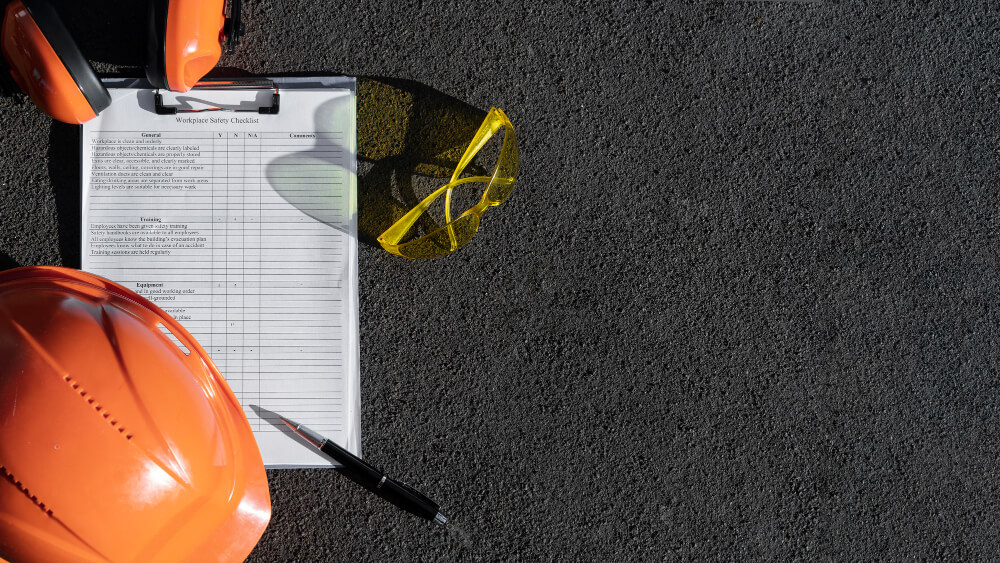Sandblasting Safety Checklist: What You Need to Know
Sandblasting is very commonly used in maintenance and preparation of surfaces in industry. Rough materials are shot at a surface to Remove layers or alter it in some way. The procedure does a great job at stripping paint, rust, and contaminants from surfaces made of metal, concrete, and wood. Even though sandblasting is effective, it has serious health risks unless you use it correctly. There are many cases of accidents, health complications, and damage to the environment in uncontrolled sandblasting environments.
No matter if it’s in construction, shipbuilding, or manufacturing, safety measures should be well understood because of the many risks involved. Because of more industrial and infrastructure projects, demand for sandblasting services is increasing in Abu Dhabi. Although companies in Abu Dhabi have high standards, it’s necessary for workers and managers to be well-informed and observe closely. If safety is observed during sandblasting, the workers avoid risks, and the work can be carried out smoothly, equipment will hold up better, and results will be top quality.
- Understanding Sandblasting Hazards
Anyone should learn about the potential risks before starting a sandblasting task. Being close to a sandblasting operation means breathing in dust that at times has toxic materials like silica, lead paint, or other heavy metals. Every time particles like these are inhaled, it can cause health problems such as silicosis, lung cancer, or issues with the lungs. Having combustible dust in some factories might cause fires and risk explosions if not carefully managed.
Workers can also get hurt by physical injuries, mainly when the machine is being handled carelessly. If small particles are propelled at incredible pace, they can enter the skin or the eyes and cause permanent scarring. Injuries at work in sandblasting often happen because of either flying debris or errors in using hoses and blast nozzles. Any safety program relies on knowing about these hazards first.
- Personal Protective Equipment (PPE)
The main way to protect yourself in sandblasting is to wear appropriate PPE. You will need to use full-face helmets, gloves, protection for your ears, blast suits, and steel-toed boots. To protect against the harmful dust, the helmets should be equipped with air that pressures higher than the surrounding environment. Layers of thick and tough material in blast suits protect the body from abrasion and soften the impact of harm from bullets and other projectiles.
They become very important when you are in an area with limited airflow. The kind of abrasive and any contaminants mean that correct respirator cartridges have to be selected. Filters and equipment performed well and properly maintained can help drastically decrease the danger of being close to particles. Abu Dhabi companies that provide sandblasting services give their workers modern protection gear to make sure they are protected at all times.
- Ventilation and Dust Control
Taking care of ventilation matters a lot in sandblasting, mainly when operating in enclosed areas. Applying dust extraction or industrial fans makes sure there are fewer airborne particles and the air can be safely breathed by workers. With these systems, there is less chance of accidents happening because the workers can now see clearly within the work zone.
If using water as part of the blasting process, dust production is greatly reduced. Adding water and abrasive helps limit dust, which makes the technique good for the environment and safer for users. Industrial Sandblasting Abu Dhabi companies often follow these methods to follow the laws set by their local government as well as to enhance working conditions for those handling dangerous substances.
- Equipment Inspection and Maintenance
Before use, all the parts of the sandblasting equipment should be checked carefully. It is necessary to look for leakage in the hoses, damage to nozzles, and the overall condition of air compressors. Event the smallest imperfections in equipment can end up in accidents and delays that are both dangerous and expensive. It is important to use inspection checklists every time to find concerns and mark areas that should be repaired or replaced.
Regular maintenance tasks should be introduced to protect the condition of all equipment. Regular maintenance helps machines operate for more years, reduces the need for downtime, and makes safety better. Service companies in Abu Dhabi often uphold stringent procedures to maintain safety and store written records of all their services.
- Training and Competency
They should be well-equipped to handle using the equipment and any emergencies that can occur. They ought to manage air pressure levels, work the ventilation systems, and identify possible problems with the equipment. Besides their regular training, workers need to be told about the safety rules and how to avoid hazards in the company.
Operators can regularly stay updated on how to be safe by taking the necessary courses and training. Every time new tools or materials come in, training modules need to be updated too. Most professional sandblasters in Abu Dhabi take part in training programs to make sure everyone in the team follows the industry’s best practices.
- Site Preparation and Warning Systems
You should take care of site preparation before beginning any sandblasting job. Among these is sealing the location to banned people, moving out any flammable or sensitive items, and constructing helpful barriers. Put in the needed lights so individuals can see clearly in dark or closed areas. The aim is to set up a space where dangers to employees and nearby people are kept low.
The place should have adequate warning signs showing ongoing blasting activities. Alarms and lights make people notice possible risks and help safeguard the work area in busier parts of the workplace. Access to sandblasting zones needs to be controlled by placing clear safety tape, fencing, or temporary walls around them, and entry open to only trained people. Following these practices cuts down on risks and supports smooth running of a project.
- Emergency Procedures and First Aid
You must ensure that you have an efficient emergency response plan. Put together first-aid supplies, fire extinguishers, and eye-wash stations, so they are easy to find. Employees need to be taught how to act when there is an injury, a piece of equipment malfunctions, or a hazard in the environment.
All employees should learn how to exit the area if an emergency happens. Usually, sandblasting companies in Abu Dhabi join hands with safety consultants to make and practice emergency plans specific to diverse job sites.
- Air Quality Monitoring
Ongoing monitoring of the air is necessary to support safety at the time of sandblasting. It is possible to install sensors that check for silica, dust, and various air pollution particles. With data, it is possible to choose when work must conclude or how to improve the flow of air in the building.
It is common to use portable monitors for assessing a project in real-time, especially during work that takes place on site. Sandblasting in Abu Dhabi is usually carried out by companies with air quality technicians who ensure that rules about the environment are followed.
- Environmental Considerations
Sandblasting can cause a large amount of waste that consists of used abrasives and dust that has been contaminated. Making sure your waste methods are compatible with the environmental rules goes a long way.
Using garnet or steel abrasives lowers the environmental effects of the abrasive process. Due to the country’s environmental goals, many sandblasting companies in Abu Dhabi are now going green in their operations.
- Noise Control Measures
Sandblasting causes loud noises; prolonged contact during this process may cause hearing loss. Earmuffs and earplugs must always be used when inside a gun range. Every so often, noise levels ought to be checked using decibel meters
Setting up acoustic barriers and choosing less noisy blasting methods is useful for places that are sensitive to noise. When working in places meant for residents or the public, these professionals are very careful.
- Fall Protection and Confined Spaces
A lot of sandblasting tasks force workers to either operate at height or navigate inside cramped areas. If you’re working at height, you must use all necessary kit like harnesses, places to attach your lines, and guardrails.
Entrance to a confined space should follow strict rules and be monitored using permits, equipment for air freshening, and monitoring devices. All rescue plans should be prepared and practiced before work takes place in these places.
- Safe Handling of Abrasives
All types of abrasives have their own guidelines you must follow. Certain items may be dangerous to people who breathe them in because they cause chemical reactions. Labelling all abrasive supplies and putting them away properly is very important.
Workers ought to receive training on how to handle abrasives without danger. The Information from Material Safety Data Sheets (MSDS) should be available for each abrasive at the construction site.
- Clear Communication Protocols
Good communication between workers boosts the success of sandblasting. Make sure you are able to keep contact through hand gestures, walkie-talkies, or other similar devices.
If someone is assigned as a safety officer, they may act as a link between employees and make sure that tasks are done without mistakes. It matters a lot at large industrial locations.
- Record Keeping and Documentation
Safety-related actions such as inspecting equipment need to be recorded just like incident reports. Detailed logs make it easier to monitor if your store is complying with the regulations and find common problems.
The records are essential for audits within a company and are also usually asked for by regulators. These companies in Abu Dhabi usually rely on digital data to make the process more efficient.
- Regular Safety Audits
- Regular Safety Audits
It is important to carry out regular safety audits to review if the safety measures are efficient. The audits should involve certified staff who check if workers use personal protective equipment, if there is proper ventilation, if equipment is well-maintained, and if all necessary training is given.
The necessary actions should be implemented right away according to the audit’s results. It results in a never-ending journey to make things safer.
- Collaborating with Certified Contractors
Bringing in professionals with certificates and experience ensures all safety rules are still in place. Such workers are equipped to look after different health challenges and modify safety procedures as needed.
Look for certified companies when you are searching for contractors to do sandblasting in Abu Dhabi. Because of this, the project will be carried out securely and with efficiency.
Conclusion
Sandblasting is a highly effective technique, but its risks should never be underestimated. By following a comprehensive safety checklist, companies can protect their workers and ensure regulatory compliance. The focus must always remain on prevention, protection, and preparedness.
Industrial Sandblasting Abu Dhabi services are known for their adherence to international safety standards, making them a preferred choice for large-scale projects. As safety regulations continue to evolve, it is vital for companies to stay updated and proactive. Working with professional sandblasting contractors in Abu Dhabi not only enhances project outcomes but also ensures a safe and secure work environment.

